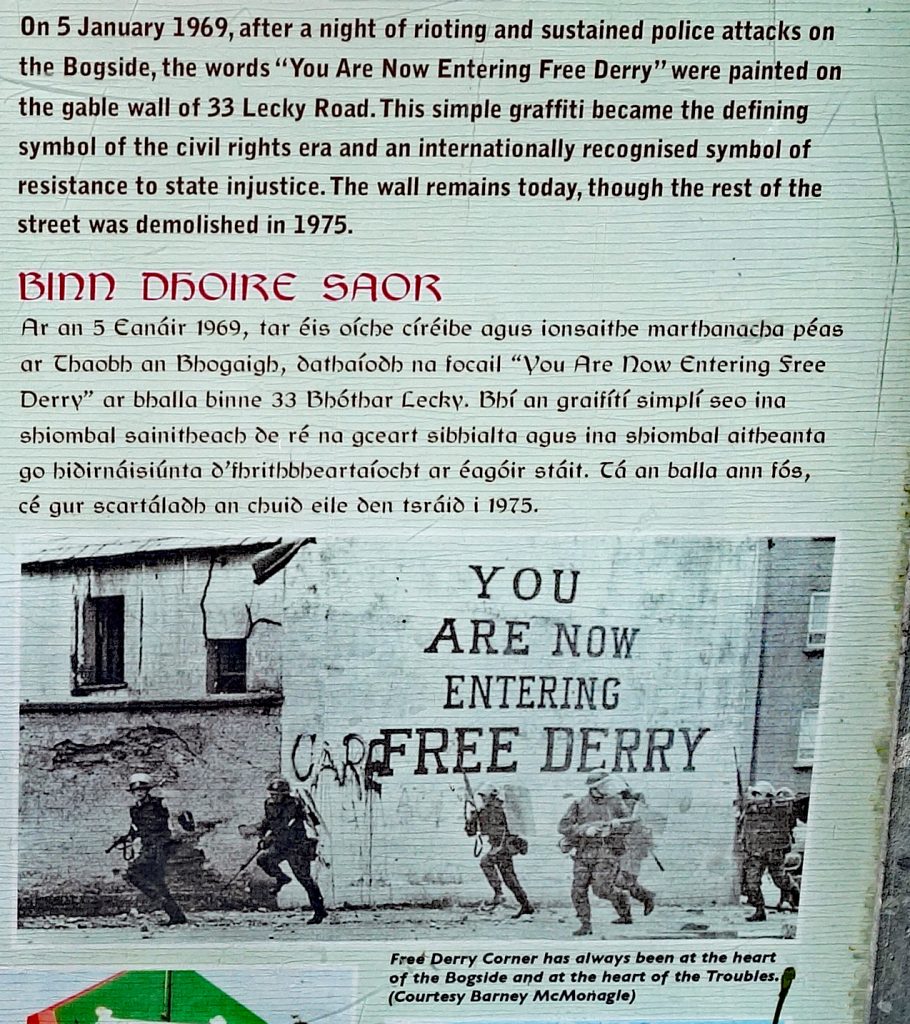
Well, that was an unusual way to start a blog entry wasn’t it, but I imagine it caught your attention as did our day in Derry…..
DERRY/LONDONDERRY (Doire / Doire Cholmcille) was a 70 minute drive from our Ballycastle apartment, and with so much to see we planned a whole day here. It turned out to be an emotional day diving into the turbulent history of the city and of Northern Ireland itself. To begin, here is a really short timeline of Irish history:
600 BC Celtic people arrive from Europe
795 the Viking’s invade
1014 the Vikings are defeated by the Celts
1171 England claims Ireland as part of their empire
1366 statutes are passed to keep the English and Irish cultures from merging
1542 the Kingdom of Ireland is established under English rule, beginning decades of rebellion by the Irish
1609 the northern area of Ulster is mostly populated by Scots and English
1800 the Kingdom of Ireland becomes part of the UK, the rebellions continue
1919 Irish rebels declare independence from Britain, the IRA is born
1921 Northern Ireland is established as part of the UK and the rest of Ireland becomes a free state, rebellions continue in Northern Ireland
1949 Ireland is declared a free republic
1969 The Troubles begin in Northern Ireland between the IRA and English loyalists
1972 the Bloody Sunday massacre happens in Derry
1998 the Belfast Agreement is signed effectively putting an end to The Troubles
Our first walking tour at 10am was with Martin McCrossan tours, taking us around and inside the walls of Derry, focusing mainly on the history of Derry/Londonderry. Derry is the original name of the city from the 11th century, and used to this day by the nationalist Irish Catholics. Londonderry was what the British re-named the city in 1613, and this is the name used by the minority English Protestants who profess loyalty to the British Crown. Derry is the only remaining completely intact walled city in Ireland and one of the finest examples in Europe of a walled city. The Derry Walls were built in 1613-1619 to protect the English and Scottish planters that had moved here from the UK. Despite attacks over the centuries the walls were never breached and today the entire length of the walls are intact and walkable. The walls surrounding Derry are roughly 1 km in circumference and have seven gates in total, four of them built at the same time as the walls and three more added over the years. The walls are lined with 22 cannons from the 16th to 18th centuries, informative plaques are scattered along the way and there are sweeping views over the infamous Bogside neighborhood to the west.
Within the walls are a number of Derry’s most important landmarks, including St. Columb’s Cathedral the first purpose-built Protestant Cathedral consecrated in 1633 and the oldest surviving building in the walled city.
After the walking tour concluded we took a look around the Guildhall. The current building was completed in 1890 but a disastrous fire in 1908 destroyed everything but the clock tower and rear block. The neo-gothic replacement was built in 1912 but in 1972, during The Troubles, it was badly damaged again, this time by two IRA bombs. All the stained glass windows were destroyed, but fortunately the magnificent organ installed in 1914 consisting of 3,132 pipes was intact. The building was restored once again after the bombings and re-opened in 1977. The current stained glass windows are replicas of the original windows. The Guildhall was where the Bloody Sunday Inquiry was held from April 1998 to November 2004 (6.5 years!!!) resulting in an unprecedented apology from the British Government for the “unjustified and unjustifiable” massacre of 13 civil rights marchers in 1969.
On display in the Guildhall are three peace prizes awarded to John Hume, gifted to the city of Derry by his late wife. John Hume was born and raised in Derry and had a pivotal role in the Civil Rights Movement. He is the only person in the world to have received all three peace prizes for his tireless efforts towards peace in Northern Ireland. He was awarded the Nobel Prize for Peace in 1998, the Martin Luther King Jr. Nonviolent Peace Prize in 1999 and the Ghandi Peace Prize in 2001.
The Peace Bridge is a footbridge across the River Foyle opened in 2011 intended to improve relations between the Unionist Waterside on the east bank and the Nationalist Cityside on the west bank. The design symbolizes a coming-together of the two communities from opposite sides of the river and promoting peaceful coexistence, although it seems tenuous at times.
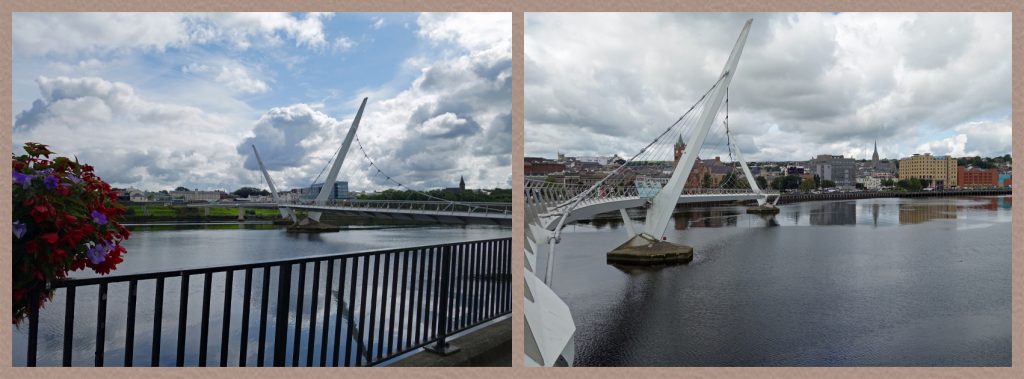
After lunch we joined another tour, this one called the Bogside Tours, focusing specifically on the modern political history of Derry, the Bogside neighborhood, the background of The Troubles and Bloody Sunday (The Bogside Massacre). This tour was heart wrenching as we stood where the 1972 Bloody Sunday shootings occurred , our guide pointed out where the soldiers came from, where protesters fell dead and where others ran to hide from the soldiers 😥 The Troubles lasted from 1968 through 1998, ending with the Good Friday Agreement of 1998. Skirmishes continue to this day, but fortunately not at the level seen previously.

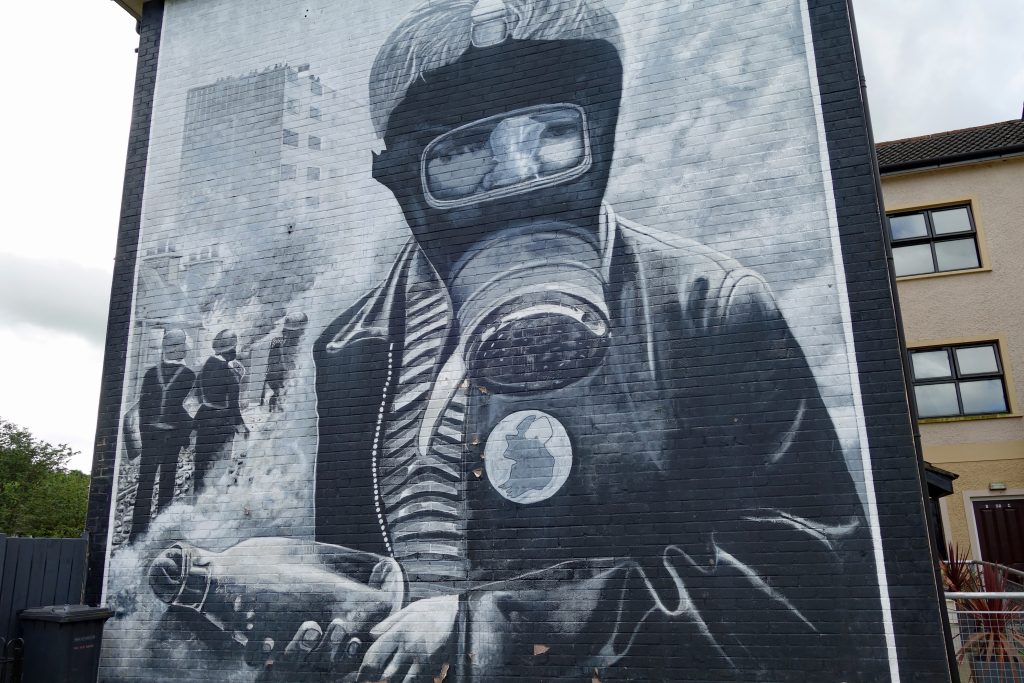
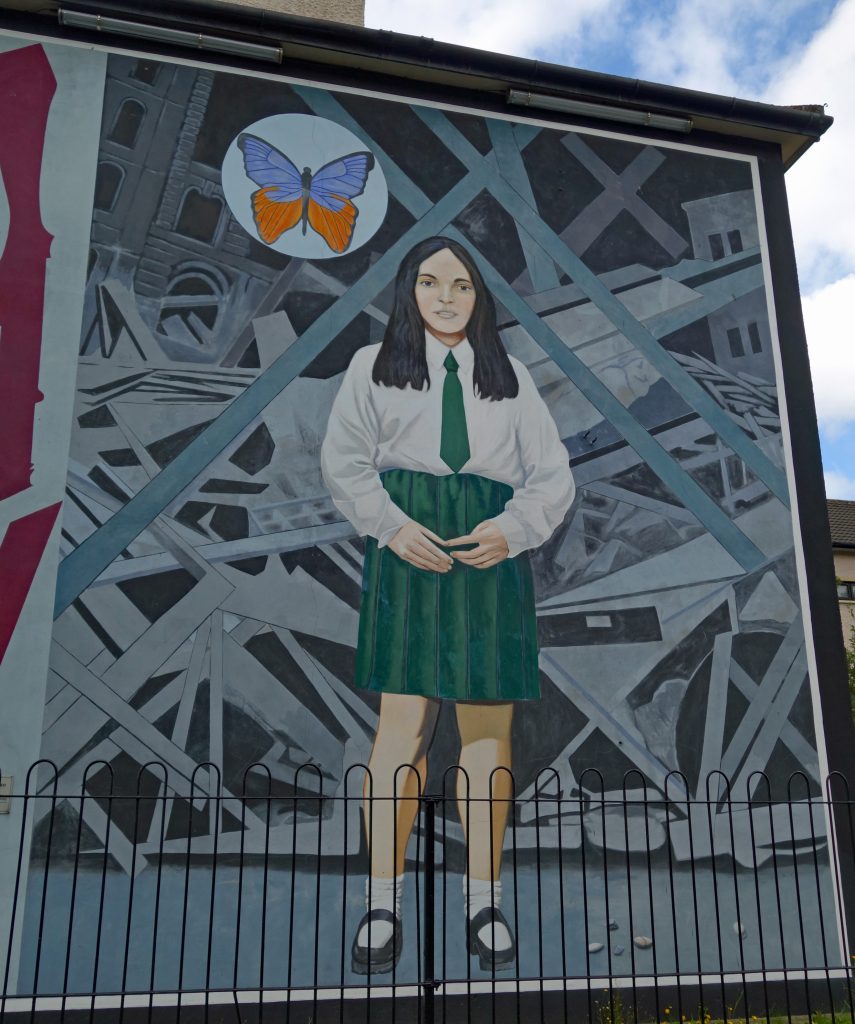
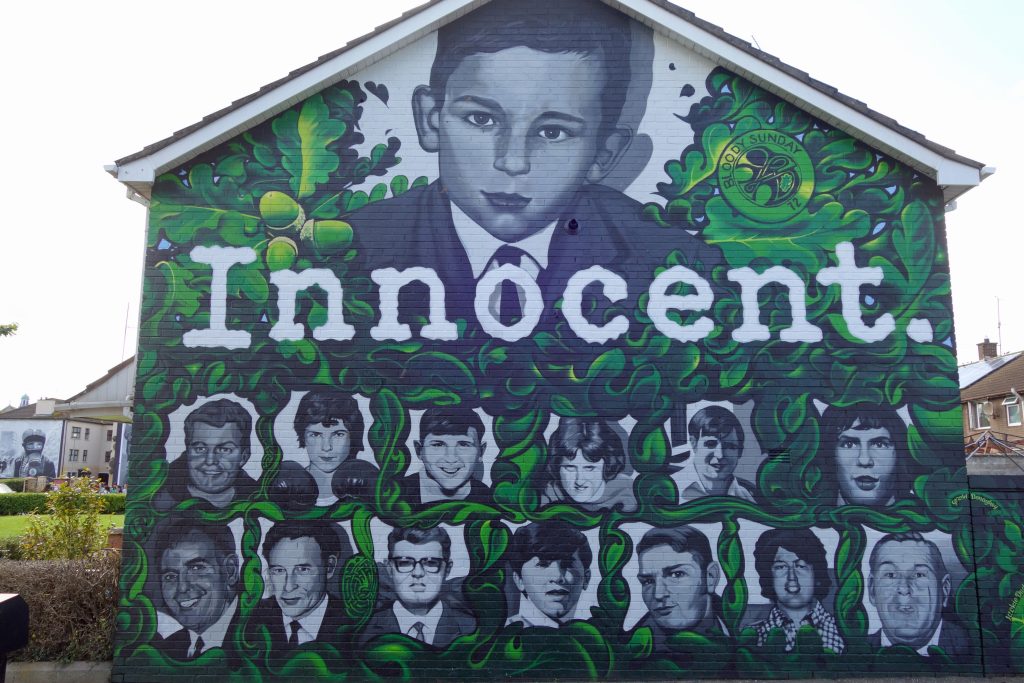
It was a day overwhelming us with emotion and history that trying to write about it here would not do justice to the depth of what went on. We have come away saddened and with a much deeper respect for what the people of Derry and Northern Ireland have faced. Here is a link to what I found to be a good explanation of how The Troubles began. Sadly, division is still evident and the IRA, in some form or another, does not seem to be completely gone.
To end on a lighter note, our Bogside guide told us of a British bus tour group he had 2 years ago who refused to get out of the bus in Bogside, convinced the IRA had snipers on the city walls ready to shoot them. Despite his assurances it was safe, not one of them got off the bus 😂
Despite the troubled past Derry/Londonderry has endured, the city is certainly worth a visit. Both of our walking tour guides reinforced the fact that Derry is open for business and welcomes tourists, in fact they need tourism to help revitalize the city. We could have spent a few more days here slowly exploring the city, but one day gave us a pretty good idea of how difficult the past has been and the hopes resting with the next generation for a peaceful future.
An té a bhíónn siúlach, bíonn scéalach
He who travels has stories to tell
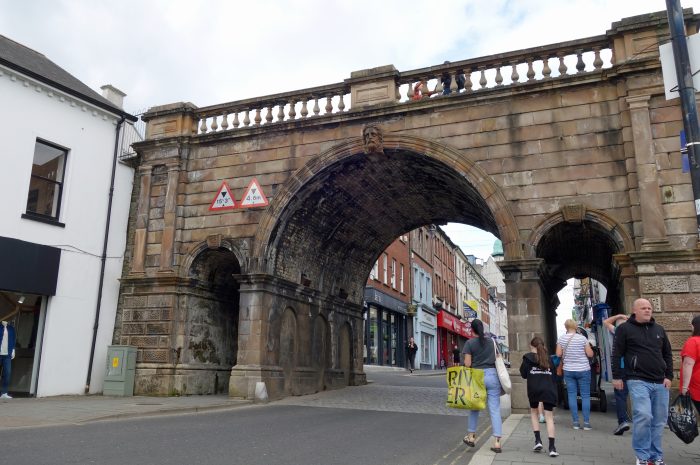
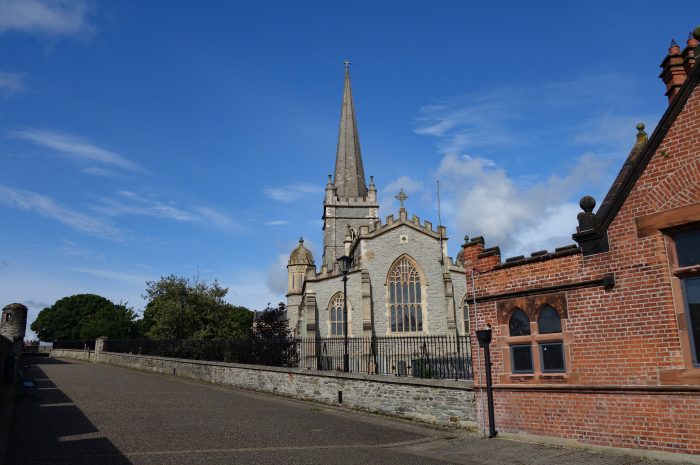


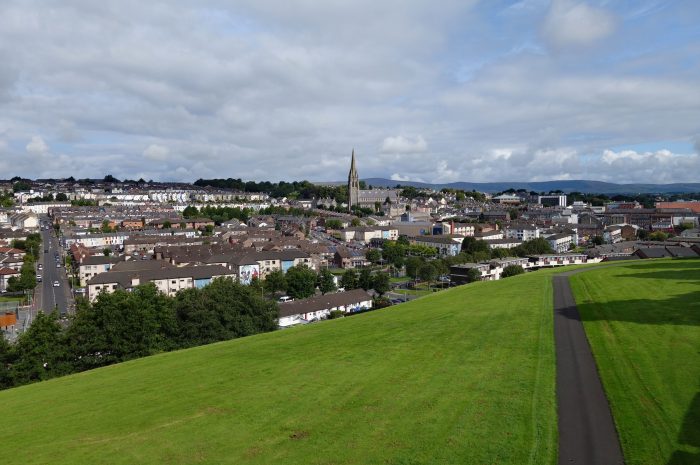

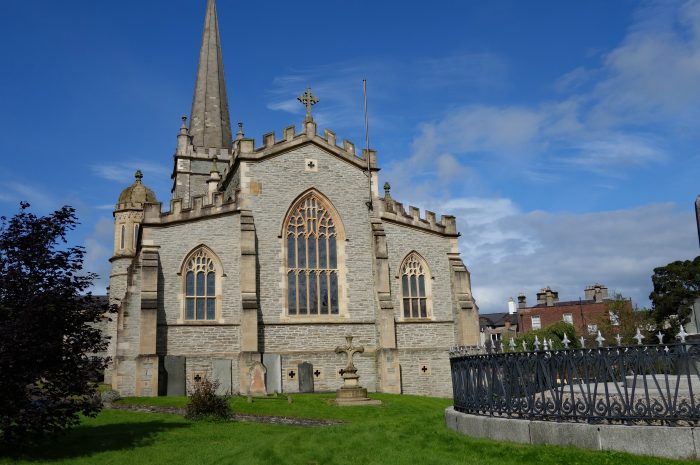

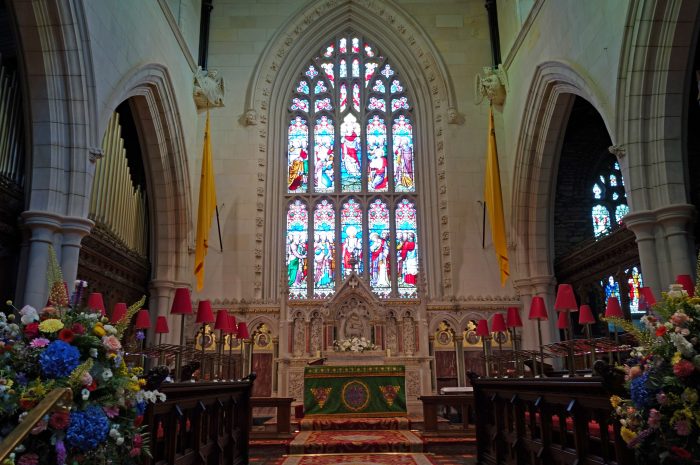
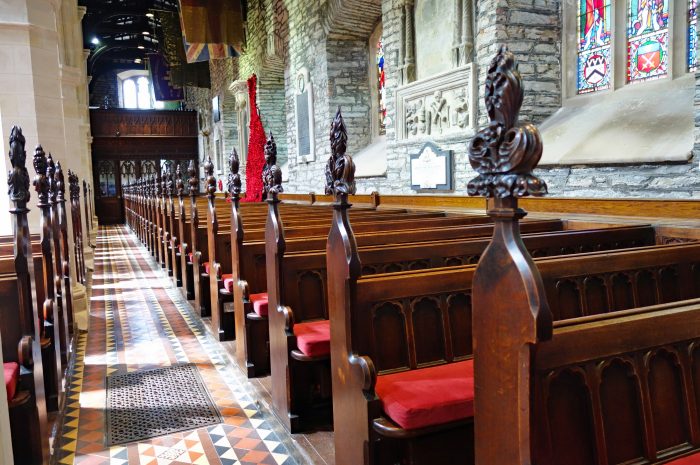

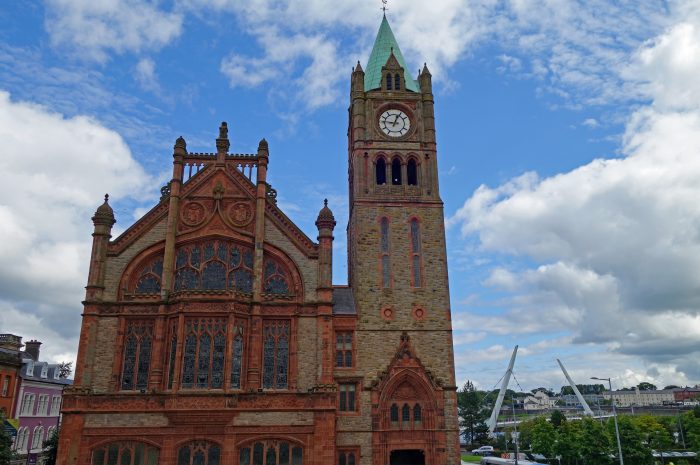


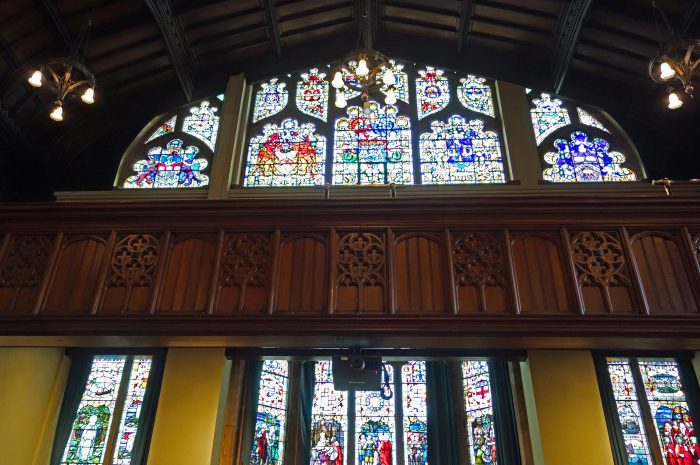
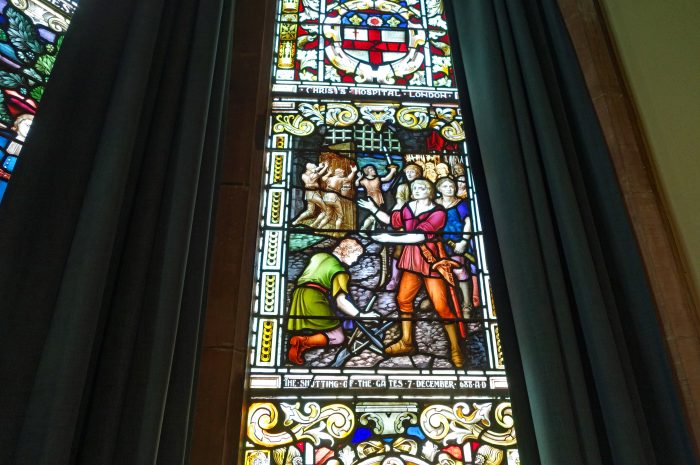
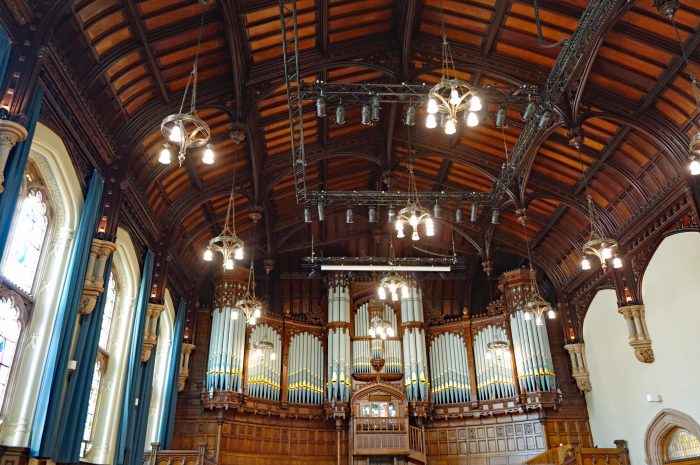

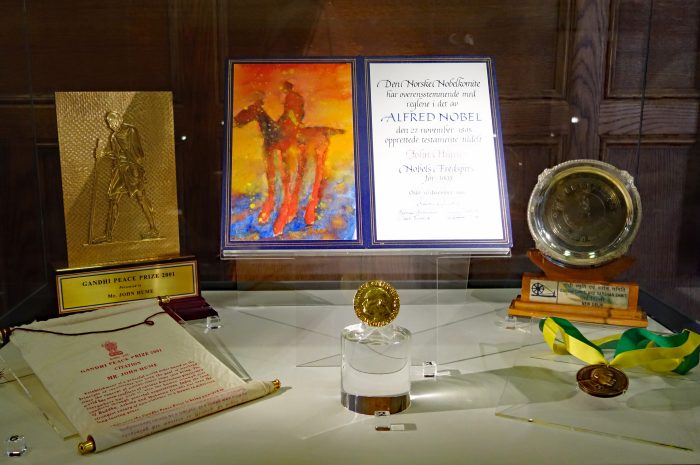
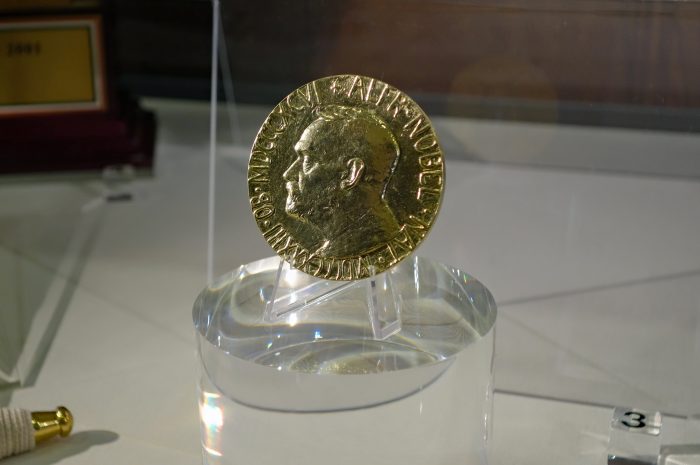
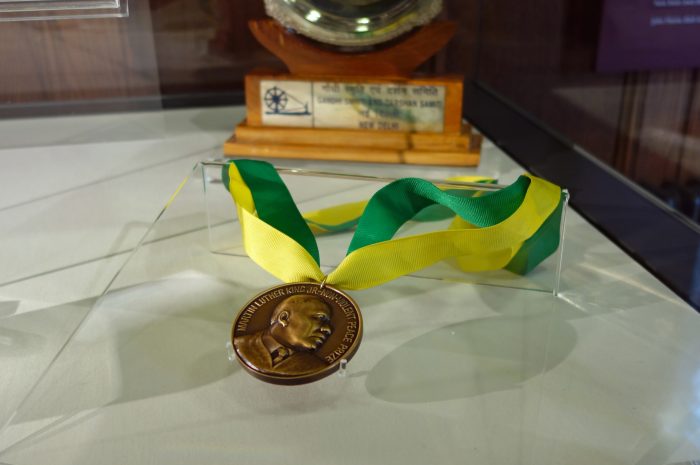
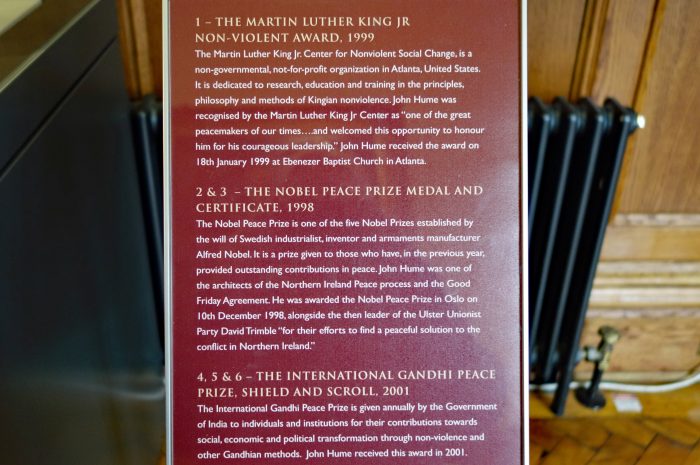

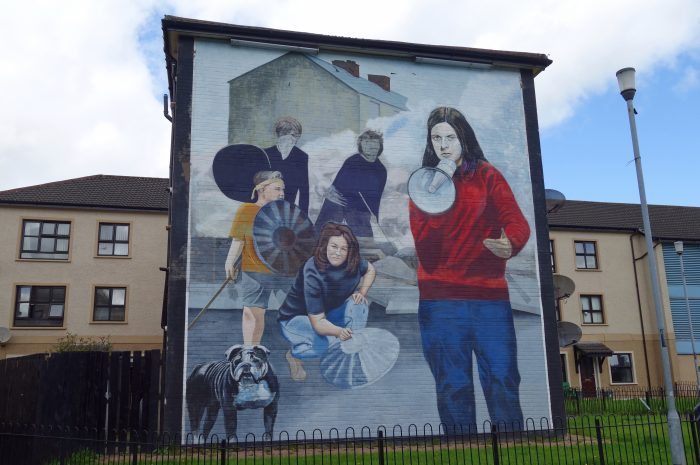

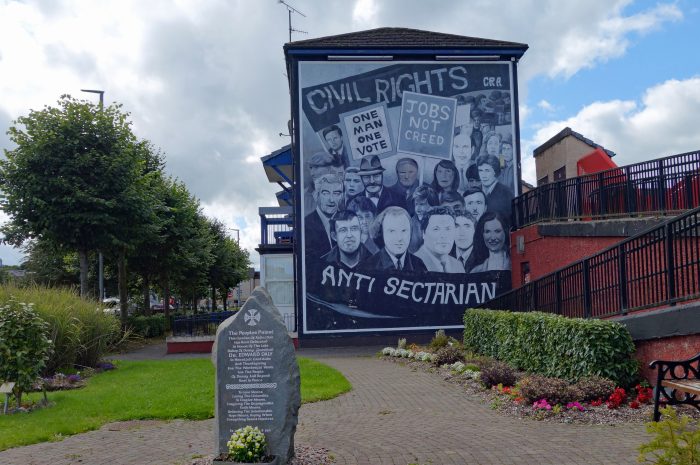
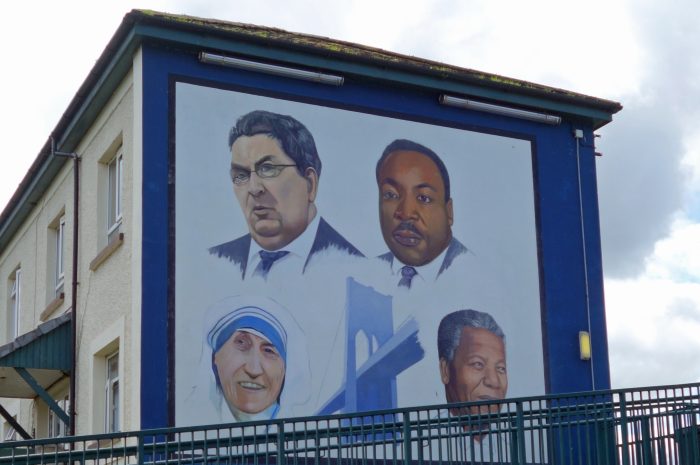
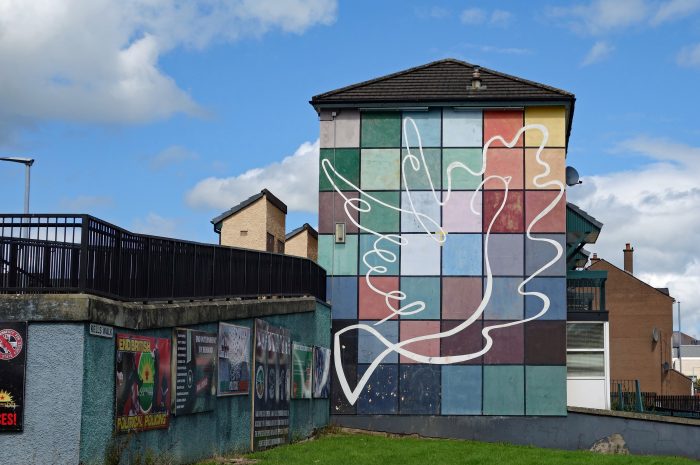
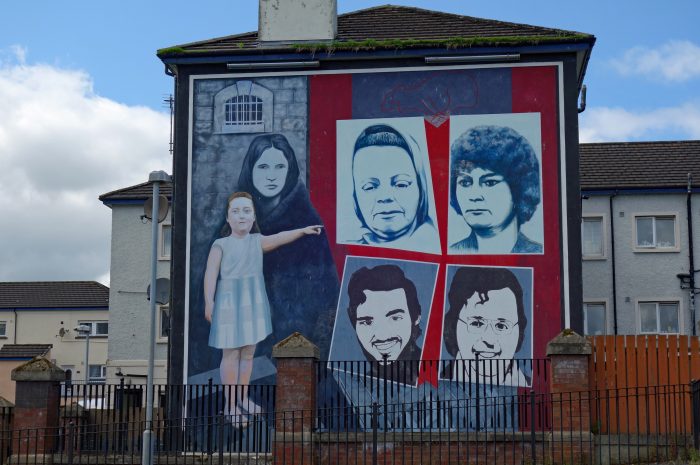

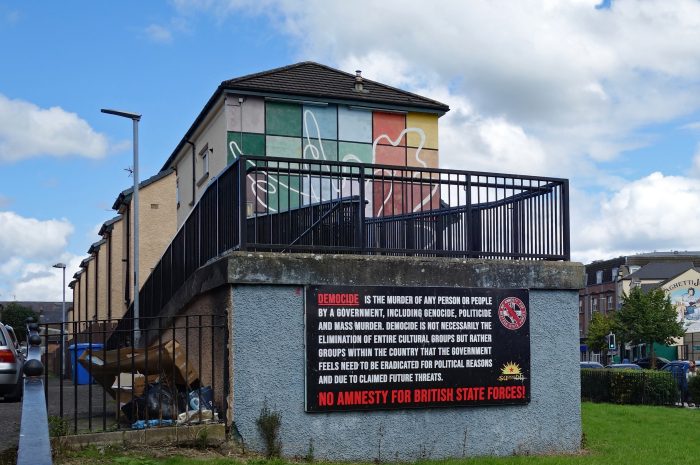
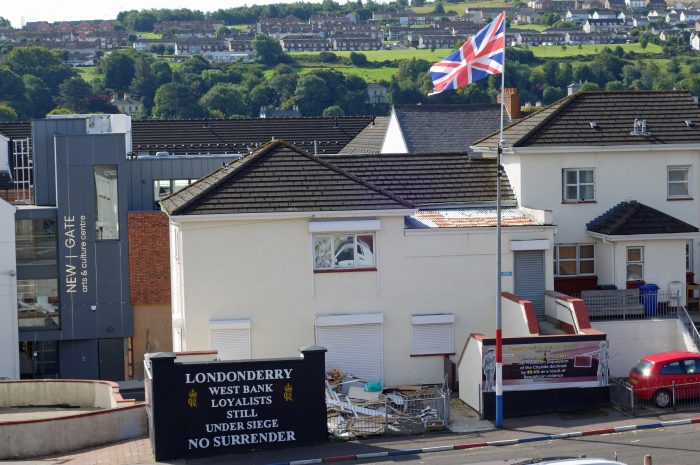
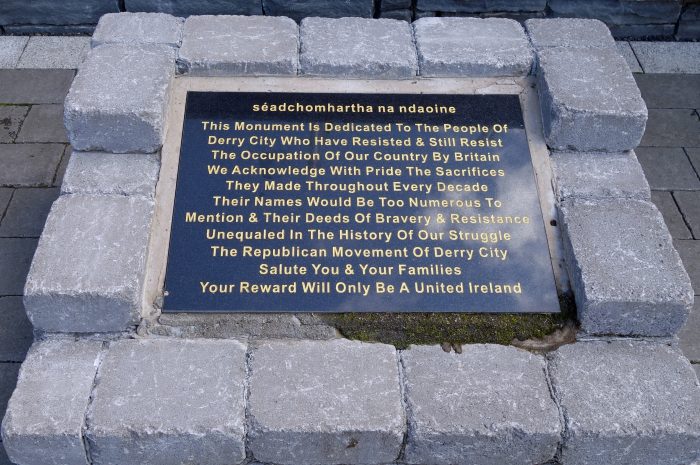
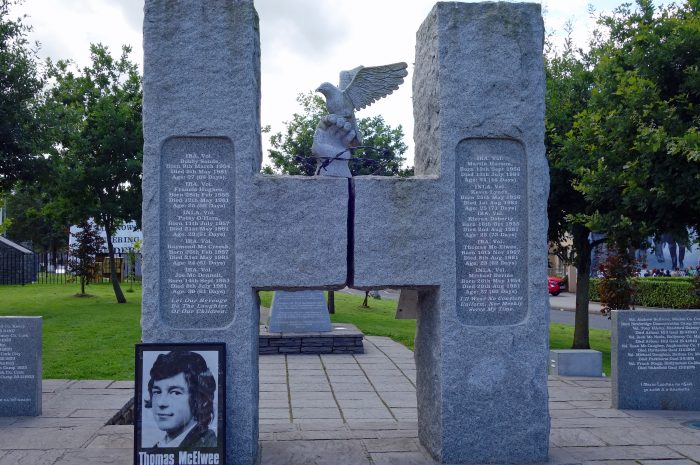
Thank you so much for your very detailed tour of the city. Sadly, I vaguely remember Bloody Sunday, but my Dad whose Dad came to Canada from Ireland was so upset during all of those times. I think for a lot of us, the tv show DERRY GIRLS really opened our eyes to what these people lived through.
I am going to use your Irish quote sometime……
Slainte
Lynne
Thanks Lynne. Visiting Derry was an eye-opening experience for us and one we are glad we had the opportunity to do. Not sure where I found the quote, but it has become quite appropriate during our travels around Ireland 😊 Slainte!
I am just back from a very brief visit to Belfast where we also went to se the murals where some of the violence took place. It is sobering but there are flags flying everywhere. The Titanic Museum is well worth a visit.
Hi Sandra, we just spent a few days in Belfast as well. It too is a sobering place to visit touring the murals and the huge walls. We did go to the Titanic Museum, what a fabulous museum with so much to see.